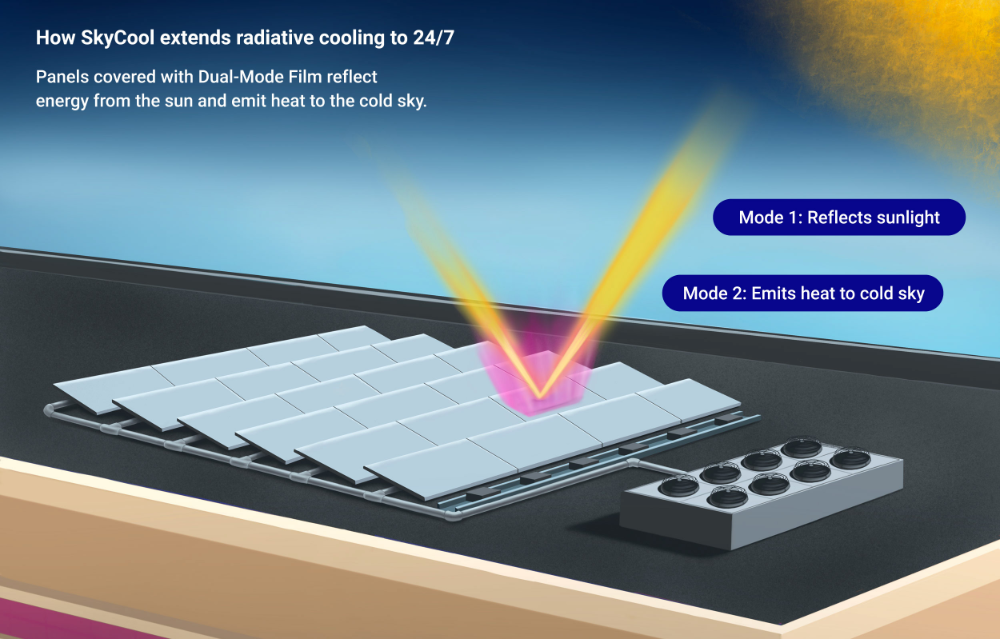Everything on Earth emits heat in the form of invisible infrared rays that rise skyward. At night, in the absence of mercury-raising daylight, this can chill something enough to produce ice. This feat relies on a phenomenon called radiative cooling.
Radiative cooling is the process by which a body loses heat by thermal radiation. Infrared radiation can pass through dry, clear air in the wavelength range of 8–13 µm.

Materials that can absorb energy and radiate it in those wavelengths exhibit a strong cooling effect. Materials that can also reflect 95% or more of sunlight in the 200 nanometres to 2.5 µm range can exhibit cooling even in direct sunlight.
Centuries ago, desert-dwelling peoples exploited this cooling to make ice. In the evenings, they insulated the walls of large bowls or pits, then poured in water. During the pitch-black night, heat escaped the liquid, and by morning, it was frozen solid.
SkyCool Systems, a startup, is trying to use this process to create chill. They are trying to improve the efficiency of all cooling systems by harnessing an untapped renewable resource: the sky.

Their core innovation is a radiative cooling material that has been combined with a panel system to improve the efficiency of any vapor-compression based cooling system, saving customers money and preventing the emissions of CO2 and other harmful greenhouse gases.
By 2050, more than 4.5 billion air conditioners and 1.6 billion refrigerators are projected to consume nearly 40 percent of all electricity.

If and when it goes mainstream, SkyCool’s tech—and similar approaches in the works from competitors and other researchers—could slow the cycle by naturally lowering building temperatures and easing the energy burden on conventional methods.
Reference- Wikipedia, The Guardian, Popular Science, Futurism






